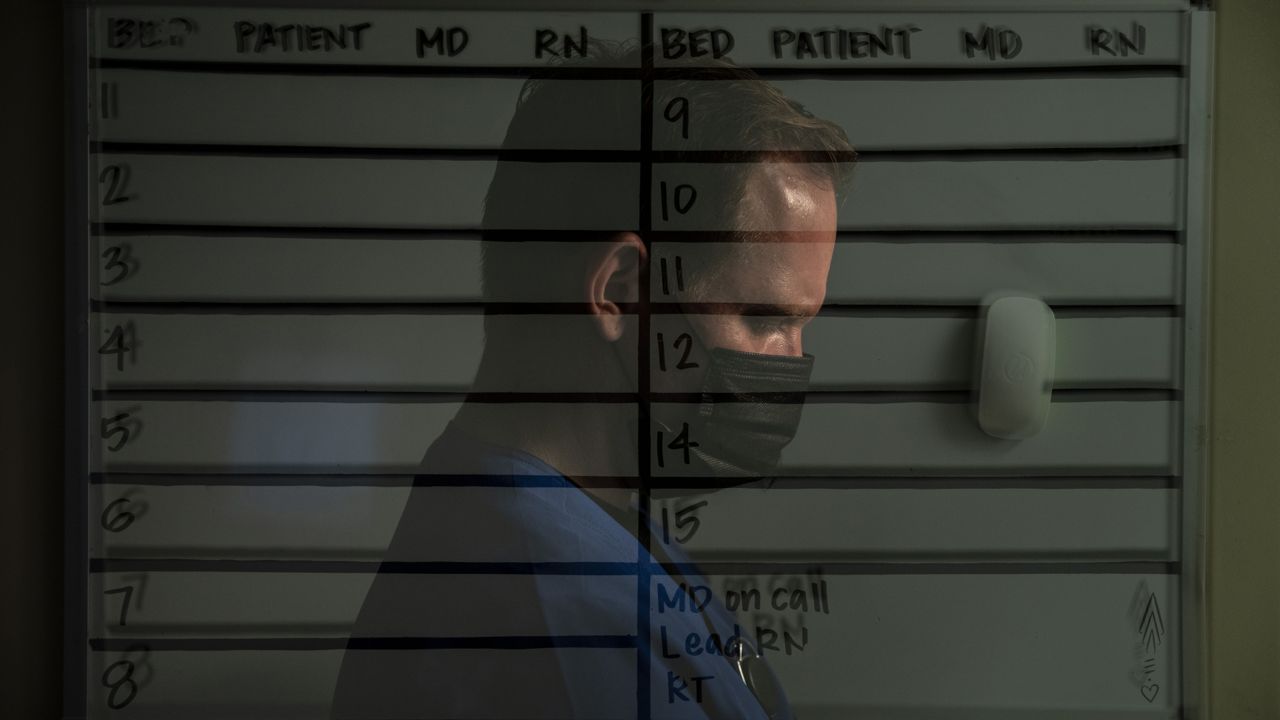SANTA ANA, Calif. (CNS) — Orange County COVID-19 hospitalizations continued a downward trend as the number of resident getting jabbed inched up, according to data released Thursday by the Orange County Health Care Agency.
The number of fully vaccinated residents in the county increased from 2,096,177 last Thursday to 2,115,536 Thursday.
That number includes an increase from 1,958,145 to 1,976,227 of residents who have received the two-dose regimen of vaccines from Pfizer or Moderna. The number of residents receiving the one-dose Johnson & Johnson vaccine increased from 138,032 to 139,309.
There are 197,514 residents who have received one dose of Pfizer or Moderna vaccines.
As of Sept. 25, the case rate per 100,000 residents for fully vaccinated residents was 3.6. It was 18.1 for the unvaccinated.
The number of hospitalized patients decreased from 291 Wednesday to 279 Thursday with the number of intensive care unit patients increasing from 82 to 85. The numbers have not been this low since the end of July.
The county has 21.8% of its ICU beds available and 66% of its ventilators.
The county also logged six additional fatalities, raising its cumulative death toll to 5,432.
Two of the deaths happened in September, raising this month's death toll to 69.
One of the fatalities occurred in August, raising the death toll for last month to 157.
That is a big jump from the trend this summer before the more contagious delta variant took off.
The death toll for July increased by one to 26, 19 for June, 26 for May, 46 for April, 199 for March, 615 for February, 1,580 for January — the deadliest month of the pandemic — and 976 for December, the next deadliest.
Dr. Clayton Chau, chief health officer and the director of the OCHCA, said the county by now "should be over 70% of eligible individuals," who have received at least one dose of a COVID vaccine. He said the vaccination rate among seniors is about 90%.
Dr. Regina Chinsio-Kwong, deputy county health officer, said Friday that 94% of the people who died in August were unvaccinated.
Without vaccines the death toll from this summer's surge, which was fueled by the more contagious delta variant, would have been higher, Chinsio-Kwong said.
Dr. Jose Mayorga, executive director of the UCI Health Family Health Centers, told City News Service Wednesday that he is encouraging residents to get flu shots this season because this year's cases of influenza are likely to be much higher than last year.
Mayorga said the difference between this year and last is more children are back in classrooms, more residents are back to work in offices and there is mask fatigue from some.
"Last year's flu season was an absolute anomaly," Mayorga said of the low level of cases.
"Why? Because people were at home working remotely, children were at home doing remote learning for the most part and we were extensively using our masks," Mayorga said.
"What has happened now is children are back to school and mask usage has dramatically declined. This could dramatically impact the rise in flu cases."
Experts are worried the flu will make a big rebound and the season will drag on longer than usual. Typically, the flu season starts at the end of fall or beginning of winter and can extend through March, Mayorga said.
It can take up to four weeks for some to build up the proper immunity when vaccinated, so now is the right time to get a shot, Mayorga said.
Mayorga advised residents to make sure they get COVID-19 and flu shots, because anyone lacking one or the other and who gets infected may present issues for doctors trying to diagnose one or the other viruses, Mayorga said.
Also, because both viruses cause inflammation, there's a danger of getting infected with both.
"Talk about a double whammy," Mayorga said. "That's a really worrisome one-two punch that could put you at high risk of dying."
Mayorga emphasized that residents should brush off the myth that flu shots can cause the flu. They don't, he said. As with the COVID-19 vaccine, a breakthrough infection of the flu can be significantly minimized because of the vaccine, Mayorga said.



